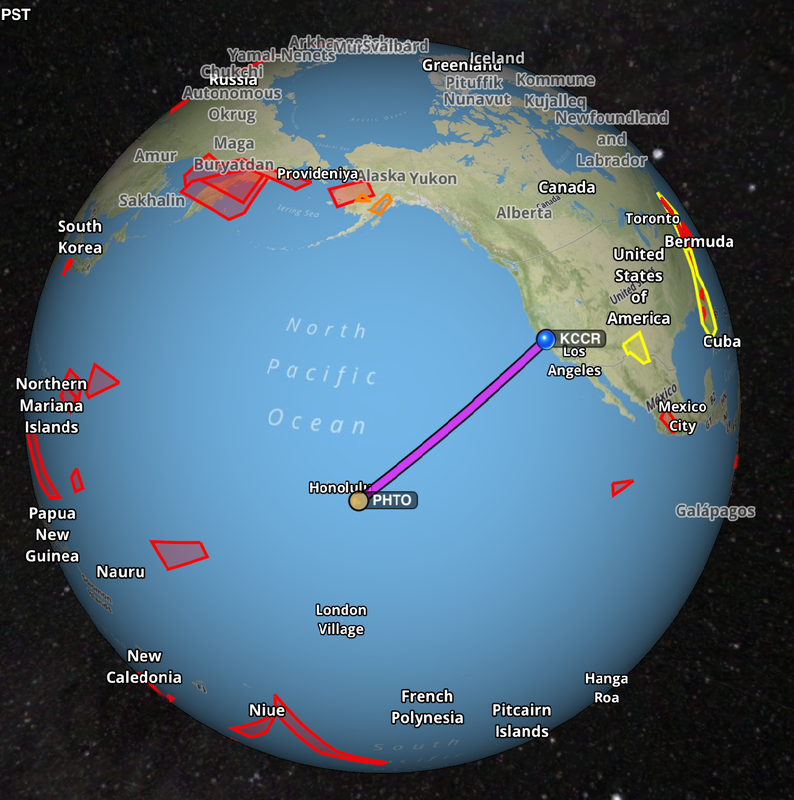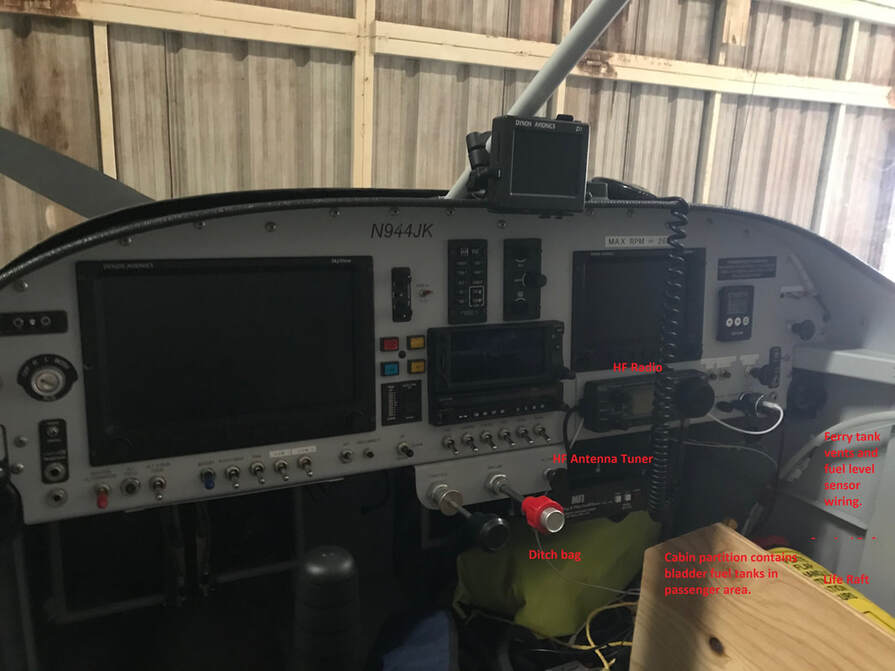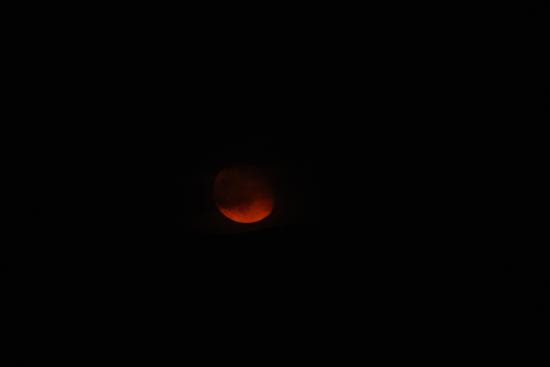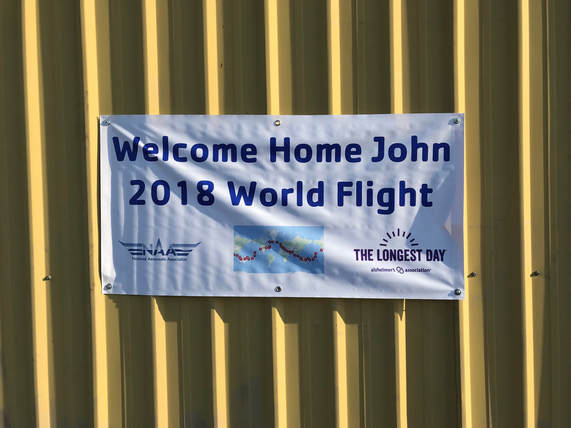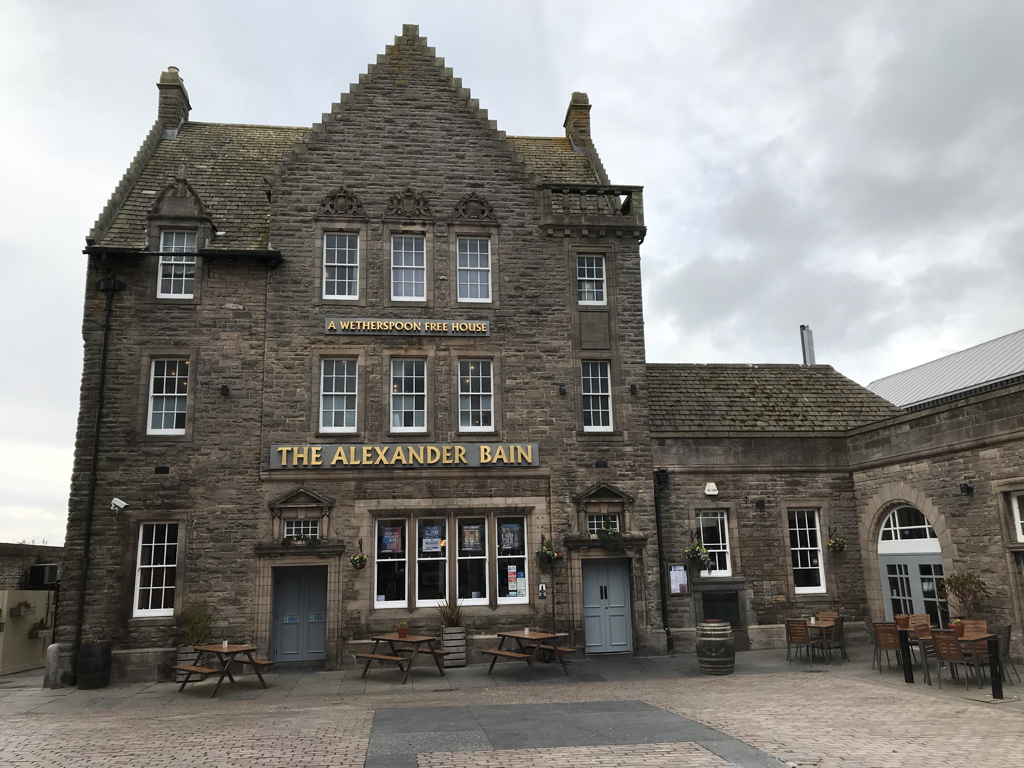|
A 2050 nautical mile, 16.5 hour flight between Hilo, Hawaii and the San Francisco bay area. Expedition Day 91 Kahului airport, Maui, Hawaii. The plane was lightened 50 lbs to carry extra fuel for the final leg of the RTW flight. Excess equipment (polar and desert survival gear, etc. ), spare parts, and souvenirs were boxed up and shipped back to my home in California. Night flight 1000 miles off the coast of California in an experimental aircraft. The longest over-water route in the world is the stretch between Hawaii and the U.S. mainland. If you run into trouble, there are no alternate landing locations along this route. The flight planning, weather conditions, the readiness of the aircraft and pilot are all critical. According to the Air Services Hawaii (ASH) FBO, it is common for ferry pilots to wait up to a month before attempting this passage. August 31, 2018 - The morning of departure At 5:30am, a USDA official inspected my aircraft, looking for fresh fruit/vegetables that might introduce invasive pests to California. The ag. inspection lasted 2 minutes as there was nothing to declare. Air Services Hawaii then helped me to pump 127 gallons (762 lbs) or 3.5x the normal load of fuel into the 5 tanks onboard the aircraft. Of that, 91 gallons of high octane aviation fuel was now stored in tanks surrounding me inside the small cockpit. Visibility outside the aircraft was blocked to my right as the bulging Turtle-pac bladder tanks touched the top of the canopy. The aircraft center of gravity was now at the aft limit. I would need to be vigilant to not stall the aircraft on take-off, letting it fly when there was sufficient lift on the wings. I wedged myself into the pilot's seat, with little room to move inside the cockpit. As a precaution against DVT (Deep Vein Thrombosis) during the expected 17 hour flight, I planned to perform leg/arm exercises every 30 minutes, and take Aspirin as a blood thinner. After obtaining an IFR clearance, I taxied out to the run-up area and performed one final engine and systems configuration check. Did I forget anything? No, the checklists were completed. I still had butterflies in my stomach. The tower cleared me to depart Hilo on the longest runway, heading 80 degrees in the general direction of the west coast of the United States. As I pushed in the engine throttle, the plane felt very heavy and accelerated incredibly slowly, using over 2/3rds of the 9800 ft runway before lift-off. With such an enormous load, my stall speed was significantly higher than the standard 48 knots (clean) of a stock Van's RV-9A. I increased speed to 100 knots, paralleling the runway, before attempting to climb. The coastline of the Big Island quickly disappeared behind me as I headed east, chasing the morning sun. This would be a brutally long solo flight. After reaching a cruising altitude of 10,000 ft, I switched to my aft fuel tank (22g, 4 hours), then the bladder tanks #1 (22g ( 4 hours) and #2 (50g (7 hours)), and main tanks (5 hours). The next challenge was to establish communications with San Francisco radio (controller of the eastern Pacific) on the high frequency radio. If I can't reach SF radio, Hawaiian ATC would not let me leave their airspace and I would be forced to return to Hawaii. Since my aircraft does not have the ability to dump fuel in flight, I would need to burn off 15 hours of fuel in a giant hold around the Hawaiian islands. Even with a perfect technique, the gear simply could not handle a landing while the plane was hundreds of pounds over gross weight. 200 nm off the east coast of Hawaii, I finally reached SF Radio as line-of-sight VHF communications began to fade. The HF radio link was tenuous, with the signal bouncing off the ionosphere before returning to earth. The controller's faint, ghost like voice was surrounded with static crashes and fading. If you have ever listened to a shortwave radio, you know what this sounds like. At what seemed like the last moment, Hawaiian ATC released me from their airspace and I was on my way to California! For the first 1000 nm, I encountered 10 knot headwinds and later, the outer bands of Hurricane Miriam. At "bingo fuel", the winds aloft suddenly shifted (as forecasted) and pushed me towards the California coast. . I flew on for the next 6.5 hours until landing at 3:30 am in Concord, California. The 17 hour journey from Hilo to Oakland/Concord was extremely exhausting and was compounded by insomnia from the previous night. I had reached my physical limit. Over the course of a few days, I quickly recovered from the lack of sleep, but it would take many months to "process" the flight around the world. Thanks for the welcome home banner Pete W! "May" is safely back home at Buchanan field surrounded by her experimental aircraft cohort: a GlassAir II and III , RV8, Volksplane, and a P-40 replica.
Brian Eisner
9/4/2018 07:51:30 am
Thanks for the update John. Comments are closed.
|
Archives
September 2018
Categories |
